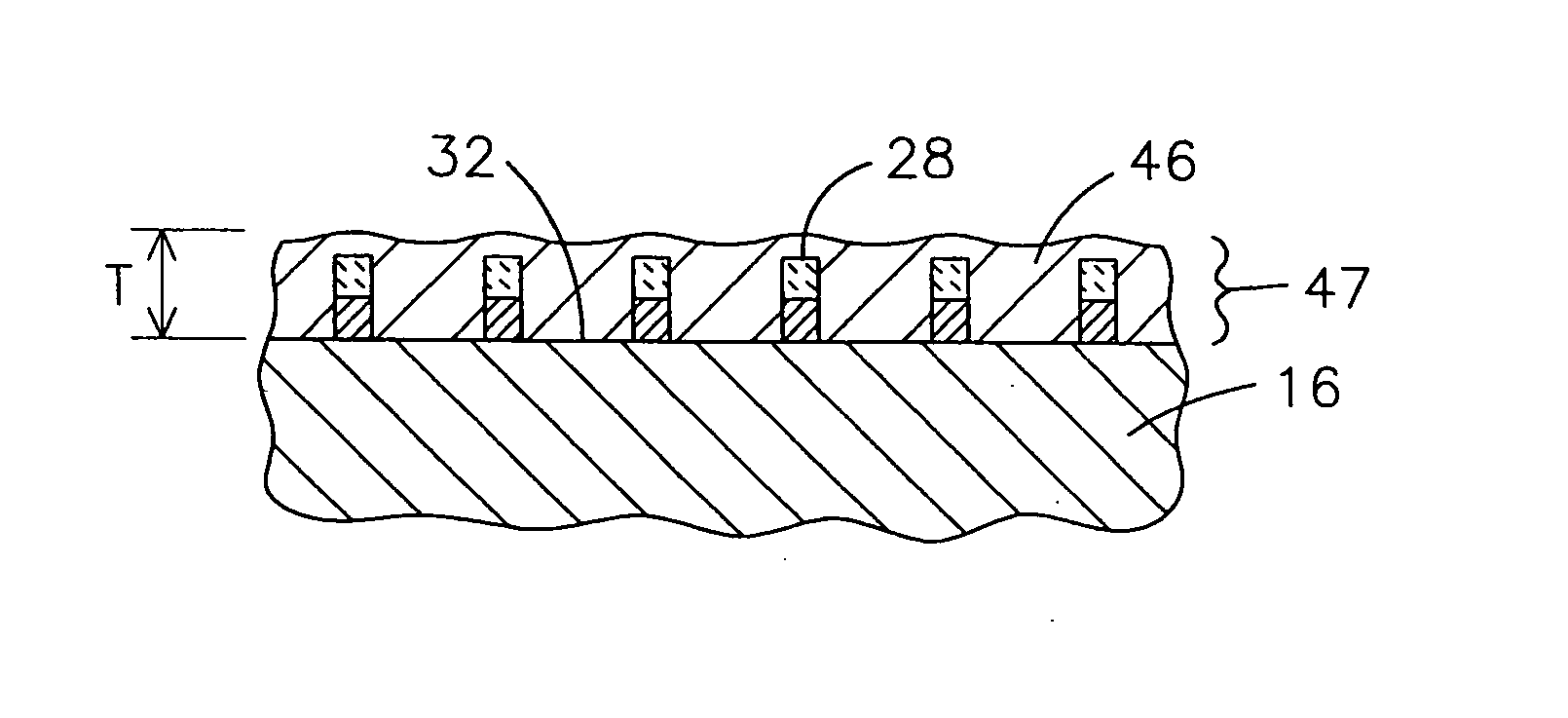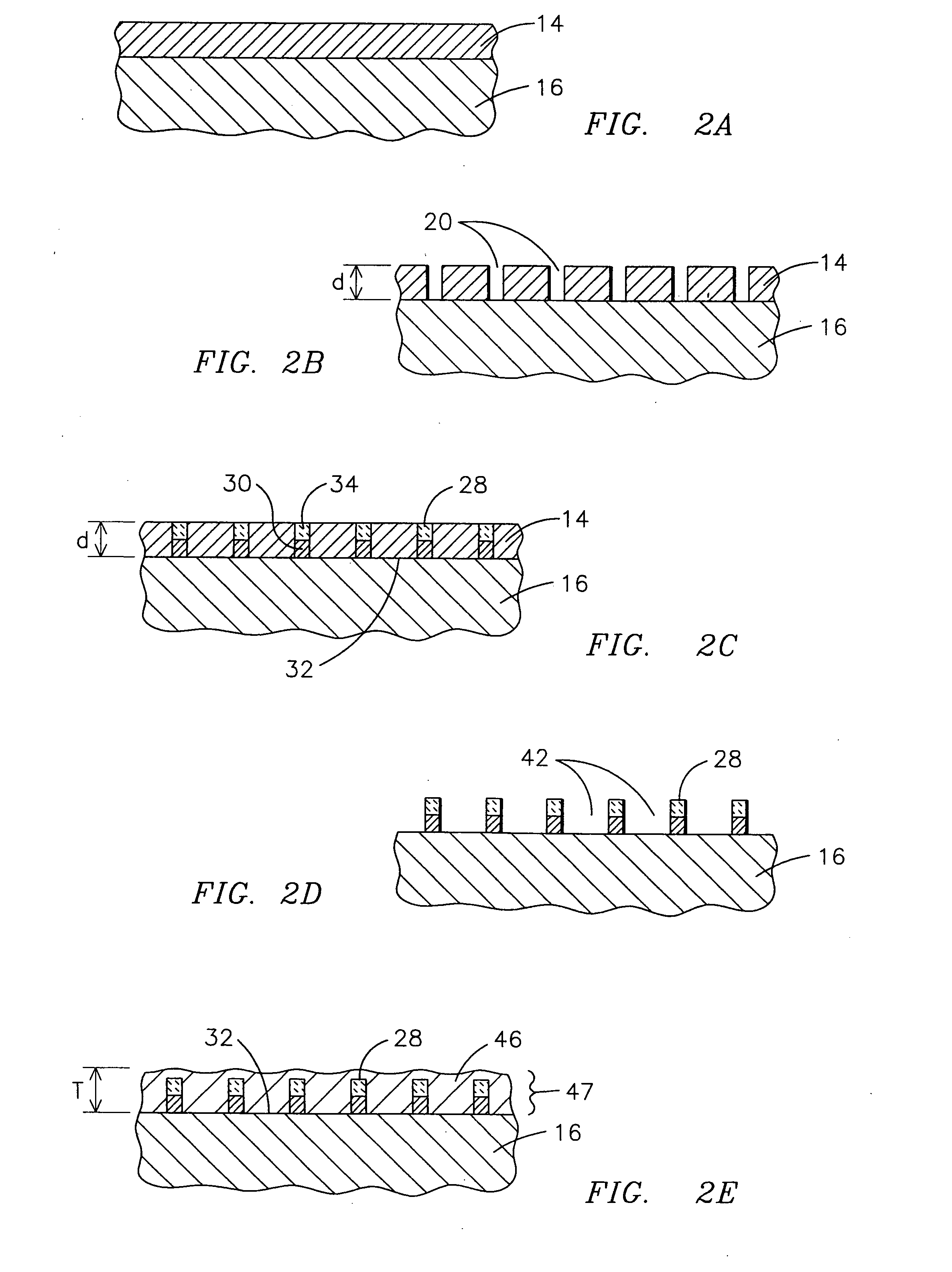Honeycomb structure thermal barrier coating
a honeycomb structure and thermal barrier coating technology, applied in the direction of vehicle route interaction devices, railway components, nuclear engineering, etc., can solve the problems of high inability to ensure the integrity of the thermal barrier coating, and high failure rate of the coating, so as to minimize the heat transfer rate through the thermal barrier coating
- Summary
- Abstract
- Description
- Claims
- Application Information
AI Technical Summary
Benefits of technology
Problems solved by technology
Method used
Image
Examples
Embodiment Construction
[0019]FIG. 1 illustrates a process 10 for insulating a substrate with a thermal barrier coating. FIGS. 2A through 2E illustrate a partial side sectional view of a component, such as a combustion turbine blade airfoil, as it is processed through one embodiment of the method 10 of FIG. 1.
[0020] As may be appreciated by viewing FIGS. 1 and 2A-2E concurrently, and particularly FIG. 2A, a masking material 14 is applied to a substrate material 16 at process step 12. The substrate 16 may be one of the nickel or cobalt based superalloys that are well known in the art for use in high temperature applications, as described above. The masking material 14 may be a dry film photopolymer photoresist material, such as are known in the art of microelectronics and photo lithography.
[0021] Referring now to FIGS. 2B and 1, a pattern is formed in the layer of masking material 14 at step 18. The pattern is formed by removing selected portions of the masking material 14 so that a plurality of first vol...
PUM
| Property | Measurement | Unit |
|---|---|---|
| angle | aaaaa | aaaaa |
| depth | aaaaa | aaaaa |
| widths | aaaaa | aaaaa |
Abstract
Description
Claims
Application Information
 Login to View More
Login to View More - R&D
- Intellectual Property
- Life Sciences
- Materials
- Tech Scout
- Unparalleled Data Quality
- Higher Quality Content
- 60% Fewer Hallucinations
Browse by: Latest US Patents, China's latest patents, Technical Efficacy Thesaurus, Application Domain, Technology Topic, Popular Technical Reports.
© 2025 PatSnap. All rights reserved.Legal|Privacy policy|Modern Slavery Act Transparency Statement|Sitemap|About US| Contact US: help@patsnap.com



